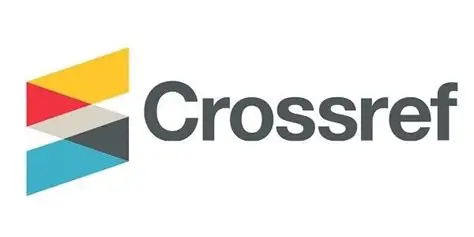AN ANALYSIS OF RELATIONSHIP BETWEEN MONEY SUPPLY AND GROWTH CYCLES: THE CASE OF INDIAN ECONOMY
DOI:
https://doie.org/10.5281/c050qe33Keywords:
Money Supply, Growth Cycles, Cyclical fluctuations, Leading Indicators.,,Abstract
The present study is an attempt to examine the cyclical relationship between money supply
and growth cycles in the Indian economy. Various theorists like Hawtrey, Cassel, Hayek and
Wicksell etc. consider monetary factors responsible for cyclical fluctuations. In this paper, Non
agricultural GDP is used as a reference variable to represent the cycles in output and M1 is
used as a specific variable to represent cyclical changes in the money supply. Bry-Boschan
dating algorithm, cross correlation and Granger causality test is used to identify the cyclical
fluctuations and lead lag relationship between growth cycles and money supply. It has been
identified that money supply is a significant leading indicator of growth cycles in Indian
economy.
References
Agénor, P., McDermott, C., & Prasad, E. (2000). Macroeconomic Fluctuations in Developing
Countries: Some Stylized Facts. The World Bank Economic Review, 251-285.
Banerjee, K. (2011, December). Credit and Growth Cycles in India: An Empirical Assessment
of
lead and Lag behaviour. RBI Working Paper Series. Retrieved from
https://rbi.org.in/scripts/PublicationsView.aspx?id=13980
Bry, G., & Boschan, C. (1971). Cyclical Analysis of Time Series: Selected Procedures and
Computer Programs. New York: Columbia University Press.
Burns, A. F., & Mitchell, W. C. (1946). Measuring Business Cycles. New York: National
Bureau of Economic Research.
Calderón, C., & Fuentes, R. (2010, June). Characterizing the Business Cycles of Emerging
Economies. Policy Research Working Paper No. 5343. World Bank. Retrieved from
https://ssrn.com/abstract=1629052
Cashin, P. (2004, July). Caribbean Business Cycles. IMF Working Paper No. 04/136 , 1-42.
International
Monetary
Fund.
sol3/papers.cfm?abstract_id=878961
Retrieved
from
Cassel, G. (1928). The Rate of Interest, The Bank Rate, and The Stabilization of Prices.
Quarterly Journal of Economics, 511–529.
Cassel, G. (1932). Theory of Social Economy. New York: Harcourt, Brace & Co.
Chitre, V. S. (1982). Growth Cycles in the Indian Economy. Artha Vijnana, 293-450.
Downs, A. (1957). An Economic Theory of Political Action in a Democracy. The Journal of
Political Economy, 135-150.
Du Plessis, S. A. (2006). Business Cycles in Emerging Market Economies: A New View of
The Stylised Facts. Working Paper, 2. University of Stellenbosch, Department of
Economics.
Retrieved
from
profile/Stan_Du_Plessis/publication /24134154
Dua, P., & Banerji, A. (2004). Monitoring and Predicting Business and Growth Rate Cycles in
the Indian Economy . In P. Dua, Business Cycles and Economic Growth: An Analysis
Using Leading Indicators. Oxford University Press.
Gorden, R. (1961). Business Fluctatuions. New York: Harper and Row.
Gujarati, D. N. (2004). Basic Econometrics. Tata McGraw-Hill.
Gupta, V. (1999). SPSS for Beginners. Canada: VJ Books Inc.
Harding, D. & Pagan, A. (2001). Extracting, Analysing and Using Cyclical Information.
Melbourne: Melbourne Institute of Applied Economics and Social Research.
Harding, D., & Pagan, A. (2002). A comparison of Two Business Cycle Dating Methods.
Journal of Economic Dynamics & Control, 1681-1690.
Harding, D., & Pagan, A. (2002). Dissecting the Cycle: A Methodological Investigation.
Journal of Monetary Economics, 365–381.
Harding, D., & Pagan, A. (2005). A Suggested Framework for Classifying the Modes of Cycle
Research. Journal of Applied Econometrics, 151-159.
Hawtrey, R. (1913). Good And Bad Trade: An Inquiry Into The Causes Of Trade Fluctuations
. London: Constable and Company Limited.
Hawtrey, R. G. (1923). Monetary Reconstruction. London: Longmans Green and Co.
Hawtrey, R. G. (1928). Currency and Credit. London: Longmans Greeen and Co.
Hayek, F. (1932). Monetary Theory and the Trade Cycle. (Kaldor, N. A., Trans.) New York:
Sentry press.
Mohanty, J., Singh, B., & Jain, R. (2003). Business Cycles and Leading Indicators of Industrial
Activity in India. Reserve Bank of India Occasional Papers. Retrieved from
https://mpra.ub.uni-muenchen.de/id/eprint/12149
Moore, G. H. (1983). Business Cycles, Inflation, and Forecasting. New York: National Bureau
of Economic Research.
Neumeyer, P., & Perri, F. (2005). Business Cycles in Emerging Economies: The Role of
Interest Rates. Journal of Monetary Economics, 345-380.
Nordhaus, W. (1975). The Political Business Cycle. Review of Economic Studies, 162-190.
Loayza, N., Ranciere, R., Serven, L., & Ventura, J. (2007). Macroeconomic Volatility and
Welfare in Developing Countries: An Introduction. The World Bank Economic
Review, 21(3), 343-357.
Lucas Jr, R. E. (1977). Understanding Business Cycles. Carnegie-Rochester Conference Series
on Public Policy, No.5, 7-29.
Lucas Jr, R. E. (1980). Methods and Problems in Business Cycle Theory. Journal of Money,
Credit and Banking, , 696-715.
and Related Studies, University of York.
Male, R. L.(2010). Developing Country Business Cycles: Revisiting the Stylised Facts.
Working Paper No. 664. School of Economics and Finance, Queen Mary, University
of London. Retrieved from http://hdl.handle.net/10419/ 55206
Mitchell, W. (1922). The Crisis of 1920 and the Problem of Controlling Business Cycles.
TheAmerican Economic Review. Retrieved from http://www.jstor.org/ stable/1805399
.
Mitchell, W. (1923). Business Cycles. In NBER, Business Cycles and Unemployment (pp. 5
. New York: National Bureau of Economic Research.
Mitchell, W. C. (1927). Business Cycles: The Problem and Its Setting. New York: National
Bureau of economic Research.
Rand, J., & Tarp, F. (2002). Business Cycles in Developing Countries: Are They Different?
World Development, 2071–2088.
Report of the Working Group on Economic Indicators (2002). Reserve Bank of India.
Snowdon, B., & Vane, H. R. (2005). Modern Macroeconomics: Its Origins, Development and
Current State. Massachusetts: Edward Elger Publishing Inc.


